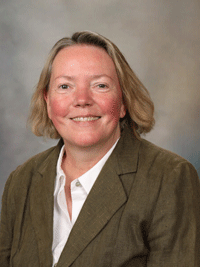Funding opportunities get tighter – what can SAB do to help?By Christina Pabelick, MD We hope all of you are enjoying summer! In follow-up to our spring newsletter, the SAB team is hard at work planning sessions for the 2026 AUA meeting. Given the changing environment of research funding and NIH’s new review criteria (https://grants.nih.gov/policy-and-compliance/policy-topics/peer-review/simplifying-review/framework), there is plenty to discuss. The thought right now is to have our panel discussion focus on alternative routes of research funding, including industry, foundations, new opportunities within the federal landscape, and international sources. We are also considering whether a session on the new NIH grant review criteria would be educational to individuals looking to submit grants in the near future. Here, an important aspect will be to understand how the new criteria will require us to modify our thinking and grant writing in terms of relative weightage of focus areas: significance, innovation, and approach vs. reliance on the investigator and environment. I know that within my own institution (Mayo Clinic) groups have come together to discuss this specific topic and how we may have to change our grant applications to highlight things that will matter to grant reviewers: should the research be done (factor 1 within the simplified review framework). In this regard, the focus of SAB is to grow the new generation of physician-scientists, providing the tools for a successful career. As stated before, there is a growing number of medical students and clinician scientists striving to make a difference within our specialty and SAB will take the lead in guiding them through the process. The role of SAB then becomes to connect physician scientists and aspiring physician scientists to connect, exchange ideas, and share enthusiasm about the work they/we do. In an effort to highlight physician scientists within our area, we are starting a new series where we showcase one individual and their background and accomplishments. We hope this will help inspire individuals and also provide opportunities for mentoring and networking. The first to go is Dr. Creed Stary, who is a member of our SAB team. Dr. Stary leads the lab for “NeuroMolecular Bioenergetics” at Stanford. Here is his lab introduction: My laboratory focuses on the mitochondrial function of different brain cell types in response to injury and anesthetic exposure. I began my journey as a scientist while an undergraduate student at UC San Diego, studying skeletal muscle bioenergetics in the setting of exercise and fatigue. After completing the Medical Scientist Training Program at UC San Diego with a PhD in exercise physiology, I chose to pursue anesthesia as my clinical specialty, given that a primary role of the anesthesiologist is to maintain normal physiologic function during the stress of surgery. Seeing firsthand the effects of anesthetics on consciousness sparked a new interest in neuroscience, and I came to Stanford after completing my residency to pursue a postdoctoral fellowship with a new focus on the brain. I was mentored by Dr. Rona Giffard in epigenetic regulation of brain mitochondrial dysfunction after stroke, supported by the departmental T32. I was subsequently awarded my first competitive grant, a 5-year K99/R00 equivalent from the American Heart Association. This paved my way to independence and my first independent NIH R01, and then as Co-Investigator on a collaborative R01. Currently, my lab is supported by an award from the United States Defense Advanced Research Projects Agency (DARPA), entitled “Creating a Safer Battlefield Anesthetic Based on a Newly Developed Anesthetic Class Specific to the GABAAR-slow Receptor Subtype.” The goal of this multi-PI, multi-institutional project is to develop novel anesthetics with an improved cardiovascular stability and safety profile compared to ketamine, for administration in the battlefield. My central role as a PI on the project is to assess the effect of novel GABAAR anesthetics on mitochondrial function in the brain. I am thrilled to be part of this collaborative and innovative project, which will lead to safer anesthetics that will eventually benefit all our patients. My journey demonstrates that a scientific career does not need to be defined by a single area of interest or a singular source of funding. From this experience, I always encourage my trainees to pursue their interests while maintaining a creative mindset that remains open to new opportunities that may arise! https://med.stanford.edu/starylab.html Author
|


